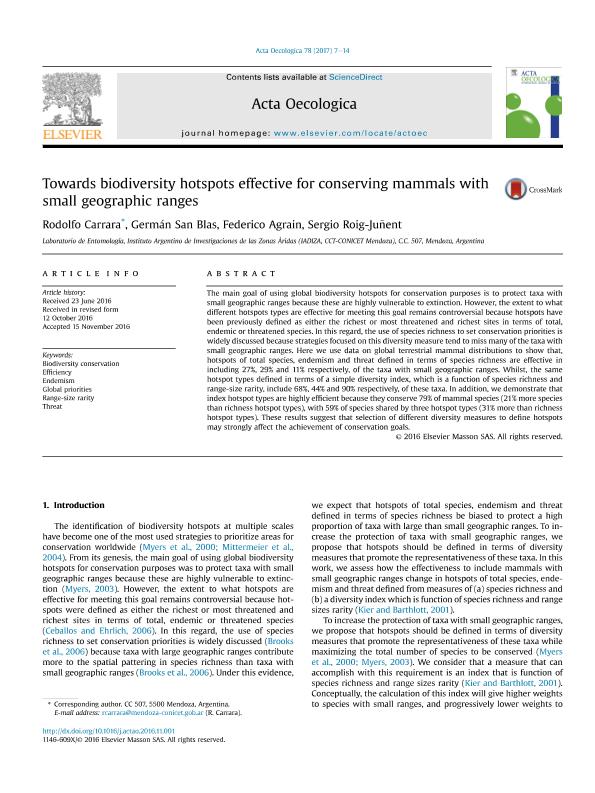Artículo
Towards biodiversity hotspots effective for conserving mammals with small geographic ranges
Fecha de publicación:
01/2017
Editorial:
Gauthier-Villars/Editions Elsevier
Revista:
Acta Oecologica
ISSN:
1146-609X
Idioma:
Inglés
Tipo de recurso:
Artículo publicado
Clasificación temática:
Resumen
The main goal of using global biodiversity hotspots for conservation purposes is to protect taxa with small geographic ranges because these are highly vulnerable to extinction. However, the extent to what different hotspots types are effective for meeting this goal remains controversial because hotspots have been previously defined as either the richest or most threatened and richest sites in terms of total, endemic or threatened species. In this regard, the use of species richness to set conservation priorities is widely discussed because strategies focused on this diversity measure tend to miss many of the taxa with small geographic ranges. Here we use data on global terrestrial mammal distributions to show that, hotspots of total species, endemism and threat defined in terms of species richness are effective in including 27%, 29% and 11% respectively, of the taxa with small geographic ranges. Whilst, the same hotspot types defined in terms of a simple diversity index, which is a function of species richness and range-size rarity, include 68%, 44% and 90% respectively, of these taxa. In addition, we demonstrate that index hotspot types are highly efficient because they conserve 79% of mammal species (21% more species than richness hotspot types), with 59% of species shared by three hotspot types (31% more than richness hotspot types). These results suggest that selection of different diversity measures to define hotspots may strongly affect the achievement of conservation goals.
Archivos asociados
Licencia
Identificadores
Colecciones
Articulos(IADIZA)
Articulos de INST. ARG DE INVEST. DE LAS ZONAS ARIDAS
Articulos de INST. ARG DE INVEST. DE LAS ZONAS ARIDAS
Citación
Carrara, Rodolfo; San Blas, Diego German; Agrain, Federico Alejandro; Roig, Sergio Alberto; Towards biodiversity hotspots effective for conserving mammals with small geographic ranges; Gauthier-Villars/Editions Elsevier; Acta Oecologica; 78; 1-2017; 7-14
Compartir
Altmétricas




